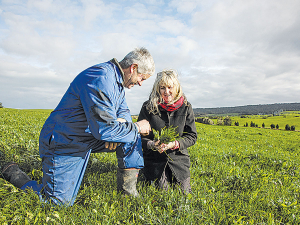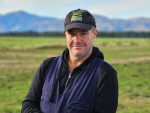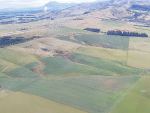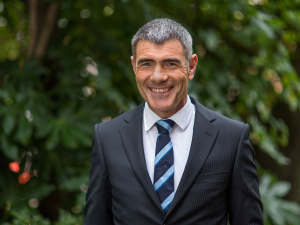A Southland farmer believes careful planning is the key to mitigating potential risks of grazing livestock on fodder crops during the winter.
Ewen and Diane Mathieson farm approximately 860 cows and replacement stock at Longwood, west of Riverton. Ewen Mathieson has 40 years of farming experience, including 12 years dairying. He uses winter grazing, where livestock progressively graze areas planted with fodder crops.
Mathieson reckons successful winter grazing is all about understanding the farm’s soils, planning ahead and managing crops well to keep the cows in top shape.
“Winter grazing is a means of putting weight on the animals at a time of year when we aren’t growing a lot of feed. This is done by storing feed through the summer months and using it in the winter to get through,” he explains.
“Every farm has different challenges and opportunities. They are all unique, especially when it comes to rainfall, soil types and topography.”
Mathieson also believes that farmers need to have plans in place for extreme weather events and have enough feed to get them through. He adds that it is also important to have good plans in place to transition on and off the various crops.
“If the weather is not good, more feed needs to be fed to help manage animals through the conditions.
“We shift most mobs twice a day, this allows us to monitor animals closely and see any issues as they arise. We also use back fences to keep cows off areas they have grazed.”
Mathieson says this allows them to give animals access to these areas if conditions mean they cannot find a dry area to rest.
“We keep water sources with them, so they have access to water all the time.”
Successful winter cropping involves many factors, from selection of suitable paddocks and establishing the crops, to good grazing management. The Mathiesons carry out soil tests to assess overall nutrient trends.
“Through this practice we have been able to greatly reduce the use of some nutrients as soil levels mean we don’t need to use so much,” he explains.
“It’s a consideration to choose paddocks away from waterways. If you don’t need to use paddocks around waterways, don’t.”
He says if you do use paddocks adjacent to waterways, then you need a good five metre buffer to minimise any risk.
“Create buffer areas around waterways or any area where there is run-off – so you get some filtration. Be very strategic with your baleage placement.”
Mathieson also advises that farmers graze paddocks strategically to minimise soil erosion and run-off into waterways.
“The greater the slope, the greater the risk. There should be at least five metre buffer for any slope. Grazing downhill can help slow down soil sediment loss,” he says.
“If the gradient is too steep for grazing downhill, leave a buffer of 10 to 15 metres at the bottom and graze across the slope, and then graze buffer areas when conditions are suitable.”
Mathieson believes that it’s important to identify critical source areas.
“Critical source areas that have been cropped can be left until the end of winter before they’re grazed, when the weather is fine. They should be grazed last.”
The Mathiesons are trialling a few different crops for grazing this year.
“We have multi-species crops which are different from the conventional brassica type. We have a couple of paddocks with a larger percentage of baleage and are comparing the different systems to work out what will give the best outcomes for animals and soils,” he explains.
“We go through a paddock plan and a feeding plan with our team, so everyone is aware of what we are trying to achieve. Our actions this year are documented to inform next year’s plan.”
The Mathiesons are planning for the future and where they can reduce livestock numbers they will.
“While we won’t do anything detrimental to profit, we will be quite strategic about creating as much value as we can out of the animals we have on farm. This means we can run the farm with a lighter footprint so there is less impact on the environment,” he adds.
“As weather events become more adverse with climate change, we have to keep thinking about what the mitigations could be. We may create standoff pads, areas where animals can go and stand.”
Mathieson says it is important that farmers are not afraid to seek advice if they have concerns or there are things they don’t understand.











